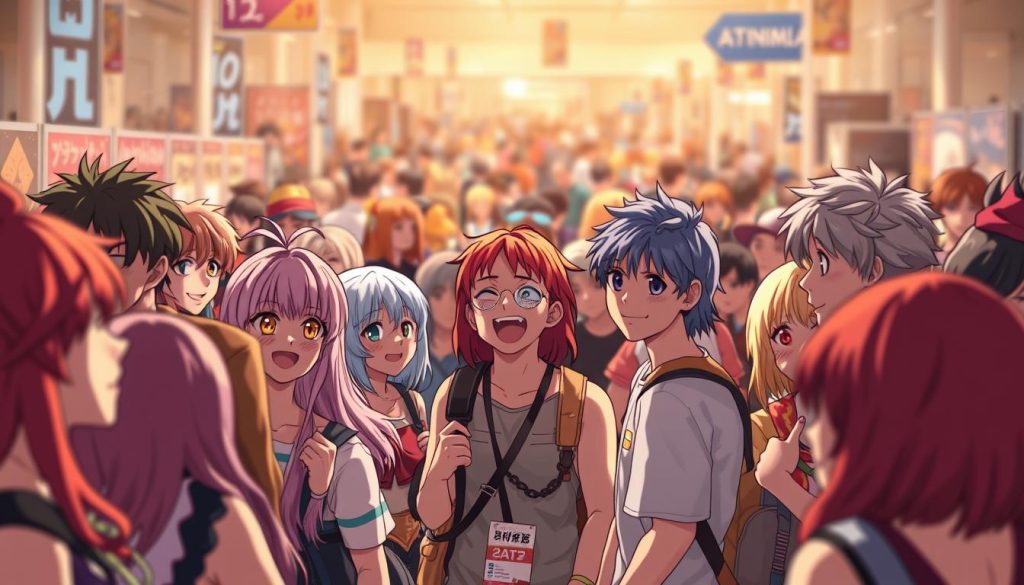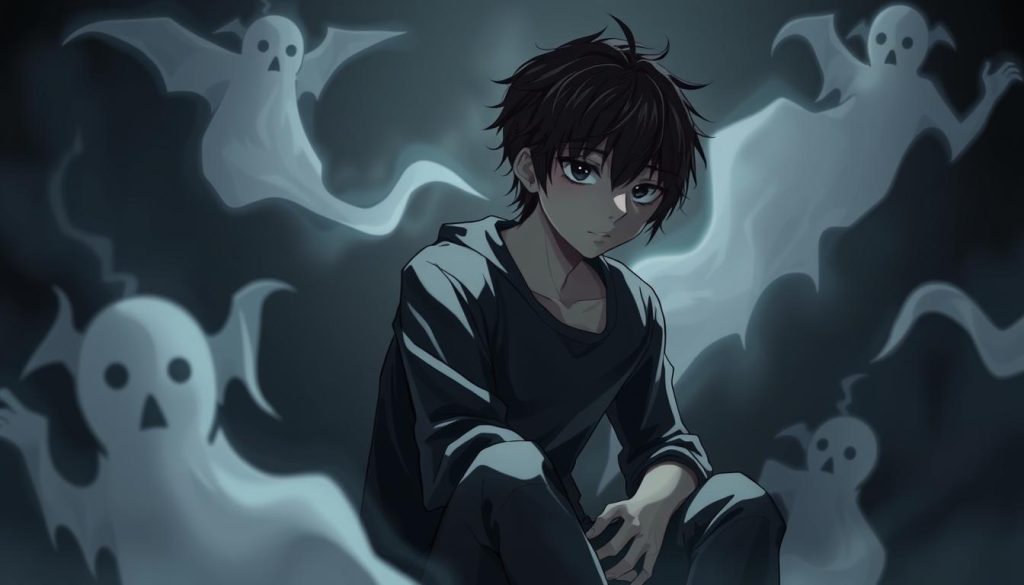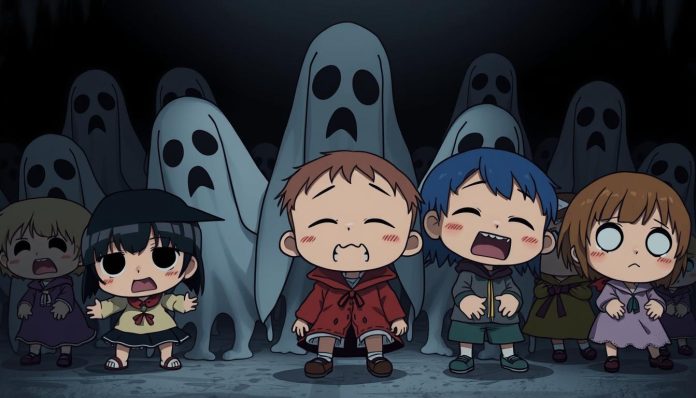As a parent, you’re likely no stranger to the captivating world of anime that has enthralled many teenagers. However, concerns about its impact on young minds have grown. Certain anime content features characters dealing with depression, self-harm, or even suicide, which can be a trigger for vulnerable viewers.
The portrayal of such mature themes in anime raises questions about its safety for your child. Recent trends have highlighted alarming connections between some anime and teen mental health issues. Understanding both the appeal and potential risks is crucial for guiding your child toward healthy consumption.
Key Takeaways
- Anime’s popularity among Western teenagers has created a cultural phenomenon that many parents struggle to understand.
- Certain anime portrayals can trigger vulnerable teens, especially those susceptible to the “suicide contagion” effect.
- Understanding anime’s appeal and risks is crucial for parents to guide their teens toward healthy consumption.
- Recent trends show connections between some anime content and teen mental health issues.
- Parents need to be aware of the content their child is consuming.
The Growing Popularity of Anime Among Teenagers
Anime, once a niche interest, has now become a mainstream entertainment phenomenon among teenagers worldwide. You might have noticed your teenager engrossed in anime series, exploring new cultures, and forging connections with characters that embody courage, intelligence, and wit.
What Makes Anime Appealing to Young Viewers
Through watching anime, young viewers can relate to characters who confront life’s challenges, experience love, and form enduring friendships. The spirit of youthful maximalism in anime resonates with teenagers, making it a captivating form of entertainment. Anime offers a diverse range of genres, from action and adventure to romance and drama, allowing teenagers to find content that aligns with their interests.
The Explosion of Anime in Western Culture
The past decade has seen anime transform into a cultural phenomenon in the Western world. With streaming platforms like Netflix and Crunchyroll, anime has become easily accessible. Major retailers now stock a wide range of anime merchandise, reflecting its growing economic impact. Social media platforms have accelerated anime’s popularity, with countless content creators and fan communities on TikTok, Instagram, and YouTube. The pandemic further boosted anime consumption as teens spent more time at home, discovering new series and connecting with other fans.
- Streaming platforms have made thousands of anime series easily accessible.
- Anime merchandise is now widely available in major retailers.
- Social media has accelerated anime’s popularity among teenagers.

As anime continues to grow in popularity, it’s essential to understand its appeal and impact on young viewers. By being aware of the content your teenager is consuming, you can have informed conversations about the media they enjoy.
Understanding Anime: Beyond Just Japanese Cartoons
Anime is more than just Japanese cartoons; it’s a diverse world of storytelling that has captured the hearts of many, especially teenagers. As a parent, understanding what anime is about can help you make informed decisions about what your child watches.

Different Types and Genres of Anime
Anime encompasses a wide range of genres, from action and adventure to romance and horror. This diversity means that there’s something for everyone, but it also requires parents to be aware of the content their child is consuming. The various genres cater to different age groups, making it essential to understand the rating system.
Age Ratings and Content Warnings Explained
Just like movies and TV shows, anime has its own rating systems, which vary by country and platform. Common ratings include TV-Y7, TV-14, and TV-MA in the US. These ratings help guide parents in choosing appropriate content for their child’s age. However, it’s crucial to note that cultural differences can sometimes lead to inconsistent ratings, and violence or mature themes may be present even in shows rated for younger audiences.
To make informed decisions, you should be aware of the content warnings provided by streaming platforms. Some services, like Netflix, offer detailed advisories for sensitive content, including violence, strong language, and psychological distress.
Is Anime Safe for Your Teenager?
As a parent, you’re likely concerned about the impact of anime on your teenager’s life. Anime, a style of Japanese animation, has become incredibly popular worldwide, captivating audiences with its diverse genres and themes. However, the question remains whether it is safe for your teenager.
The Benefits of Anime Consumption
Anime can have several benefits for teenagers. It can foster creativity, provide cultural insights, and offer a unique form of storytelling that can be both entertaining and educational. Engaging with anime can also help teens develop critical thinking skills as they analyze complex themes and narratives. With a vast array of genres, there’s something for every teenager, from action and adventure to romance and historical drama.
The Hidden Dangers Parents Should Know
While anime has its benefits, there are also potential dangers that parents should be aware of. Some anime contains explicit content, including violence, sexual themes, and graphic scenes that may not be suitable for younger viewers. Certain portrayals can be a trigger for vulnerable viewers, especially adolescents who are more susceptible to the “suicide contagion” or copycat effect. As a parent, it’s crucial to be aware of what your teenager is watching and to have open conversations about the content.
Some of the risks associated with anime consumption include exposure to inappropriate themes, violence, and unrealistic body image standards. For instance, some anime series romanticize or glorify unhealthy relationships, potentially shaping teens’ understanding of relationships in a negative way. Moreover, excessive anime consumption can lead to social isolation if it replaces real-world interactions.
“The impact of media on youth is a complex issue that requires careful consideration of both the positive and negative effects.”
By being informed and engaged, parents can help their teenagers navigate the world of anime safely.
The Alarming Connection Between Anime and Teen Suicide
As anime continues to gain popularity worldwide, a troubling connection to teen suicide has emerged, warranting closer examination. The concern is not just about the content itself, but how it influences vulnerable teenagers.
Media Portrayal of Depression and Self-Harm
Anime often portrays complex themes, including depression and self-harm, in a graphic manner. Some series depict suicidal behaviors or self-harm without adequate warnings or responsible handling, potentially impacting impressionable viewers. The media portrayal can sometimes glamorize or trivialized these serious issues, leading to a desensitization effect among viewers.
- Graphic depictions of suicide or self-harm can violate media guidelines for responsible reporting.
- Repeated exposure to such themes can normalize suicidal ideation.
Research Findings on Suicide Contagion Effects
Research has shown that exposure to suicide in media can lead to an increase in suicidal behavior among vulnerable individuals, a phenomenon known as the “Werther Effect” or suicide contagion. Studies have particularly noted the susceptibility of adolescents to this effect due to their developmental stage. A Russian study found correlations between early anime consumption and higher depression rates in young adulthood, especially among those who identified with isolated characters.
How Anime Can Romanticize Death and Suicide
Anime, a popular form of entertainment among teenagers, sometimes romanticizes death and suicide, potentially influencing vulnerable viewers. This romanticization can occur through various themes and narratives that portray death as a noble or heroic act.
The Isekai Genre: Rebirth After Death Narratives
The isekai genre, where characters are reborn into a fantasy world after dying, can potentially idealize suicide as a means of escape for struggling teens. This narrative device often presents death as a transition to a new life, stripping away the finality and horror of mortality. In these stories, characters frequently achieve a form of redemption or fulfillment in their new world.
Glorification of Tragic Endings and Martyrdom
Many anime series feature heroic sacrifices where characters die for noble causes, often portrayed with beautiful animation and emotional music. These sacrificial deaths are frequently framed as the ultimate expression of love, friendship, or heroism, potentially suggesting to impressionable viewers that dying for others is the highest form of devotion. Some anime presents suicide as an honorable solution to impossible situations, reinforcing dangerous ideas about suicide as a meaningful act.
- Characters who die tragically in anime frequently achieve in death what they couldn’t in life—recognition, love, or the resolution of conflicts.
- The cultural context of these portrayals sometimes draws from Japanese concepts like noble sacrifice, which may not translate appropriately to Western audiences.
The Psychological Impact of Anime on Vulnerable Teens
The anime world can be a complex and potentially hazardous place for vulnerable teenagers. As they immerse themselves in the stories and characters, they may be influenced in ways that can affect their mental health.
Identifying with Isolated or Depressed Characters
Many anime series feature characters who are isolated, depressed, or struggling with mental health issues. While these portrayals can be realistic and relatable, they can also have a negative impact on vulnerable viewers. Teens who identify with these characters may become more withdrawn or isolated, as they see their own struggles reflected in the characters’ experiences. As one expert notes, “excessive immersion in anime can become problematic when it replaces rather than supplements real-world interactions and experiences.”
Some teens may develop unhealthy attachments to fictional anime characters, investing significant emotional energy in these relationships at the expense of developing real social connections.
When Fantasy Becomes an Unhealthy Escape
For some teenagers, watching anime can become an escape from the challenges of everyday life. While fantasy and escapism can be healthy coping mechanisms in moderation, excessive immersion in anime worlds can become problematic. The idealized worlds and relationships portrayed in anime can make reality seem disappointing by comparison, potentially increasing dissatisfaction with real life and exacerbating depression or anxiety.
As a parent, it’s essential to understand the underlying reasons why anime is interfering with your child’s daily life. Is it an escape from challenges at school, family issues, or simply a search for more excitement? By understanding the root cause, you can help your child develop healthier coping strategies and a more balanced way of consuming anime.
Social Stigma and the Anime Subculture
Being part of the anime subculture can be a double-edged sword for teenagers, offering a sense of belonging while also exposing them to social stigma. As a parent, it’s essential to understand this dynamic to support your teenager effectively.
How Peer Rejection Affects Mental Health
Peer rejection can significantly impact a teenager’s mental health, particularly if they are already vulnerable. The stigma associated with enjoying anime can lead to feelings of isolation, depression, and anxiety. Research has shown that subcultures with a low reputation, such as anime, are associated with more mental health problems in their members.
The Double-Edged Sword of Online Anime Communities
Online anime communities can be both a blessing and a curse. On one hand, they provide a platform for fans to connect, share, and find acceptance. On the other hand, these communities can sometimes normalize unhealthy behaviors or expose teens to harmful content. For instance, discussions around depression and self-harm, while intended to be supportive, can inadvertently trigger or reinforce these issues in vulnerable individuals.
| Positive Aspects | Negative Aspects |
|---|---|
| Provides a sense of belonging and shared interest | Can normalize unhealthy behaviors |
| Offers social connection and acceptance | May expose teens to harmful content or relationships |
| Supports fans in sharing their experiences | Can lead to intense parasocial relationships |
As a parent, being aware of these dynamics is crucial. While many online anime communities are positive and supportive, some fringe communities may promote concerning ideologies or behaviors. Therefore, it’s vital to guide your teenager toward healthy anime consumption and maintain an open dialogue about their online interactions.
Warning Signs Your Teen May Be Negatively Influenced
Recognizing the signs that anime may be negatively influencing your teen is the first step towards creating a healthier viewing environment. As a parent, being aware of these indicators can help you intervene early and guide your teen towards a more positive engagement with anime.
Behavioral Changes to Watch For
Changes in behavior can be a significant indicator that anime is having a negative impact on your teen. Look out for signs such as increased withdrawal, changes in appetite, or alterations in sleep patterns. Monitoring these changes closely can help you identify potential issues early on.
- Withdrawal from social activities
- Changes in mood or increased irritability
- A sudden loss of interest in activities they once enjoyed
Content Red Flags in Their Favorite Shows
Some anime content can be particularly problematic for teens. Be cautious of shows that contain explicit suicide scenes, glorify mental illness, or portray death as a solution to problems. These narratives can be harmful and may negatively influence vulnerable teens.
- Explicit suicide scenes or detailed self-harm methods
- Anime that romanticizes mental illness or portrays it as ‘deep’ or ‘special’
- Series that feature protagonists rewarded or happy after death
How to Guide Your Teen Toward Healthy Anime Consumption
As a parent, guiding your teenager toward healthy anime consumption is crucial in today’s digital age. Anime can be a fun and engaging hobby for teens, but it also necessitates parental guidance to ensure it doesn’t negatively impact their mental health.
Setting Appropriate Boundaries
To protect kids, it’s essential to set boundaries around their anime consumption. This includes monitoring the content they watch and limiting the time spent on it. You can use parental control tools to block access to mature or inappropriate content. By doing so, you help your child develop healthy viewing habits.
- Monitor the anime your child watches to ensure it’s suitable for their age.
- Set time limits to prevent excessive screen time.
- Use parental control software to restrict access to mature content.
Having Open Conversations
Having open conversations about the themes and messages in anime is vital. Approach these discussions with genuine curiosity rather than judgment, asking your teen about their favorite series and what they find meaningful. This helps you understand their perspective and provides an opportunity to discuss complex topics like mental health.
- Ask open-ended questions about the anime they enjoy.
- Discuss the difference between fictional portrayals and real-life consequences.
- Share resources on mental health support and suicide prevention.
By watching anime together as a family, you can experience the content firsthand and create opportunities for natural discussions about themes and messages. This shared activity can help you protect kids from potential harm and foster a healthier relationship with anime.
Conclusion: Balancing Appreciation with Protection
As you navigate the complex world of anime with your teenager, it’s essential to strike a balance between appreciation and protection. Understanding why your teen is drawn to anime can provide valuable insights into their interests and emotional needs.
By establishing a balanced approach that acknowledges anime’s artistic value while setting boundaries around screen time and content, you can help your child enjoy its benefits while minimizing risks. Staying informed and engaged with your teen’s anime interests shows respect for their tastes and allows you to monitor for concerning content.

